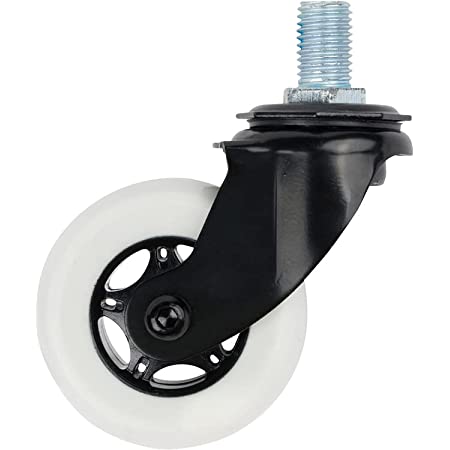If you are not familiar with the parts numbering of shock absorber casters, they begin with “S” for Swivel, “R” for Rigid, or “D” for Dual. Then, the part number follows with an “H” for Heavy Duty. While there are a lot of different variations of shock absorbers available, they all share the same basic part numbering.
Applications
Shock absorbing casters are a great option for many applications. They are used in a variety of applications, including medical equipment, laboratory equipment, computer mainframes, sound and lighting equipment, and food processing equipment. Their shock-absorbing design also minimizes wear on flooring.
Spring-loaded casters are designed to absorb shock and reduce the impact on the cart. This reduces noise and allows for smoother movements. These casters are excellent for uneven surfaces or for floors that are sensitive to vibrations. They are also a good option for loads that are highly reactive to vibrations. Here’s a closer look at the most common types of dual-wheel shock-absorbing casters.
Materials
The main characteristics of Dual Wheel Shock Absorbing Casters are their strength, durability, and ease of rolling. They can withstand high-shock loads, as well as corrosive environments. The polyurethane wheels are non-marking and easy to push. They are also resistant to oil and grease. They have the ability to withstand high temperatures and are ideal for freezers and tow lines.
Dual Wheel Shock Absorbing Casters may be built on one axle or mounted independently. Single-axle Dual Wheel Casters react to obstructions with very little impact, while dual-axle casters impact the obstacle evenly with minimal force. Dual-wheel shock-absorbing casters are often made of Poly-Soft or Duralast, although the latter two have many advantages over other materials.
Weight capacity
Dual Wheel Shock Absorbing Casters have many advantages. The spring-loaded design is especially advantageous, as it reduces noise and vibration while transporting delicate cargo. The spring-loaded design also protects delicate items from damage and extends caster life. However, when selecting the right weight capacity, it is important to consider the weight of the load. If the load exceeds 50% of the maximum capacity, the caster will no longer provide shock absorption.
Fortunately, dual-wheel shock-absorbing casters are made to withstand much greater weights than traditional casters. The weight capacity of a pair of dual-wheel shock-absorbing casters can exceed 20,000 pounds, making them ideal for heavy-duty applications. They also keep the wheels of the vehicle flat on the floor and relieve excess stress on one wheel. This helps keep the vehicle on the ground, minimizing the risk of failure or damage to the cargo.
Cost
Dual wheel shock absorbing casters are very useful for moving large objects, especially when a single one is not sufficient. They have a capacity of up to 25,000 pounds and feature fully independent suspension to help keep the cart level. They also reduce the stress on the one wheel, preventing it from being pushed off-center. The price of dual-wheel shock-absorbing castings varies according to the quality and the type of casters that you choose.
Generally, a double-row ball is suitable for heavy loads ranging from 280 to 420 kg. These balls are stamped or hot-forged and are welded to the wheel frame for added strength and durability. They are also non-marking and non-conductive, making them suitable for environments with a dry temperature and little moisture. However, it is better to choose wheels made of plastic or aluminum, as they may rust.
Manufacturers
Shock absorbing casters are ideal for a wide range of uses, from industrial applications to light-duty home use. These casters come in a range of varying sizes and are designed to cater to individual customer requirements. To help customers select the correct model, access casters offers a number of resources, including how-to articles and conversion instructions. These casters can handle higher weight capacities than regular casters and are often called “universal casters.” These casters are made of two independent wheels, which reduces the risk of failure in heavy loads and ensures that each wheel stays firmly on the ground. The shock-absorbing qualities of dual-wheel casters also protect the cargo on either end and minimize the likelihood of wheel failure.

